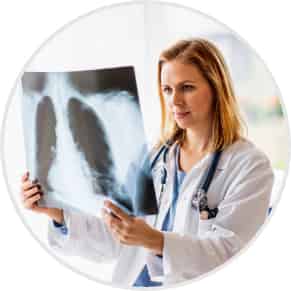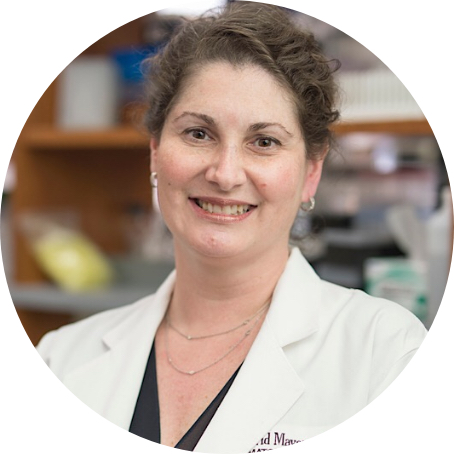The connection between breast health and bone health is important. If you’re diagnosed with breast cancer, having a history of healthy bones can be beneficial.
The Connection between Breast and Bone Health
Whether you’re healthy, have just been diagnosed with breast cancer or are living with metastatic breast cancer, the connection between breast and bone health is vital.
Knowing your family history and your potential health risks are lifesaving, so it’s important to learn your family health history so you’ll be aware of your risk of developing health problems.
Bone Health
The National Institutes of Health has information on bone health and why it’s important to protect your bones throughout your lifetime. Knowing your family health history can be useful in talking with your doctor about the risk of developing cancer, other diseases and conditions. Ask your family about any family history of osteoporosis
You can keep your bones strong by eating a healthy diet, adding physical activity into your routine and maintaining a healthy weight.
Early breast cancer
and bone health
Some breast cancer treatments can affect bone health. However, there are medications that can improve bone density and either help prevent or treat bone loss (osteoporosis). Even after treatment ends, there can be ongoing health concerns, relating to bone health. Talk with your doctor about any concerns you have about your bone health.
Metastatic Breast Cancer
in the Bones
Breast cancer can spread (metastasize) to the bone which can lead to bone complications including bone fractures and spinal cord compression. These complications can cause pain and loss of mobility. If you have metastatic breast cancer in the bone, a bone-strengthening therapy may be added to your treatment plan to protect your bones and reduce your risk of bone complications. Talk with your doctor to discuss these therapies and which might be right for you.
Breast & Bone Health Risk and Tips
Whether you’re in your 20s, 30s, 40s, 50s or beyond, knowing your family health history is an important first step in understanding your risk of breast and bone problems.
| BONE HEALTH |
|
|---|---|
|
|
- Talk to both sides of your family to learn about your family health history
- Talk to a doctor about your risk of breast cancer
- If you believe you’re at higher risk, talk to your doctor about genetic counseling and genetic testing
- Talk with a doctor about which screening tests are right for you if you are at higher risk
- Have a clinical breast exam at least every 3 years starting at age 20, and every year starting at age 40
- Sign up for your screening reminder at www.komen.org/reminder
- See a doctor if you notice any of these breast changes:
- Lump, hard knot or thickening inside the breast or underarm area
- Swelling, warmth, redness or darkening of the breast
- Change in the size or shape of the breast
- Dimpling or puckering of the skin
- Itchy, scaly sore or rash on the nipple
- Pulling in of your nipple or other parts of the breast
- Nipple discharge that starts suddenly
- New pain in one spot that doesn’t go away
- Maintain a healthy weight
- Add exercise into your routine
- Limit alcohol intake
- Breastfeed, if you can
- Talk to both sides of your family to learn about your family health history
- Talk with your doctor about your risk of osteoporosis
- Maintain a healthy weight
- Eat a diet rich in calcium and vitamin D
- Add exercise into your routine
- Avoid smoking
- Limit alcohol intake
- Talk to your doctor about your bone health
- Read the Surgeon General’s Report on Bone Health
- Learn more about bone health
- Talk to both sides of your family to learn about your family health history
- Talk to a doctor about your risk of breast cancer
- If you believe you’re at higher risk, talk to your doctor about genetic counseling and genetic counseling and genetic testing
- Talk with a doctor about which screening tests are right for you if you are at higher risk
- Have a clinical breast exam at least every 3 years starting at age 20, and every year starting at age 40
- Sign up for your screening reminder at www.komen.org/reminder
- See a doctor if you notice any of these breast changes:
- Lump, hard knot or thickening inside the breast or underarm area
- Swelling, warmth, redness or darkening of the breast
- Change in the size or shape of the breast
- Dimpling or puckering of the skin
- Itchy, scaly sore or rash on the nipple
- Pulling in of your nipple or other parts of the breast
- Nipple discharge that starts suddenly
- New pain in one spot that doesn’t go away
- Maintain a healthy weight
- Add exercise into your routine
- Limit alcohol intake
- Breastfeed, if you can
- Talk to both sides of your family to learn about your family health history
- Talk with your doctor about your risk of osteoporosis
- Maintain a healthy weight
- Eat a diet rich in calcium and vitamin D
- Add exercise into your routine
- Avoid smoking
- Limit alcohol intake
- Talk to your doctor about your bone health
- Read the Surgeon General’s Report on Bone Health
- Learn more about bone health
- Talk to both sides of your family to learn about your family health history
- Talk to a doctor about your risk of breast cancer
- If you believe you’re at higher risk, talk to your doctor about genetic counseling and genetic testing
- Talk with a doctor about which screening tests are right for you if you are at higher risk
- Have a mammogram every year starting at age 40 if you are at average risk
- Have a clinical breast exam every year starting at age 40
- Sign up for your screening reminder at www.komen.org/reminder
- See a doctor if you notice any of these breast changes:
- Lump, hard knot or thickening inside the breast or underarm area
- Swelling, warmth, redness or darkening of the breast
- Change in the size or shape of the breast
- Dimpling or puckering of the skin
- Itchy, scaly sore or rash on the nipple
- Pulling in of your nipple or other parts of the breast
- Nipple discharge that starts suddenly
- New pain in one spot that doesn’t go away
- Maintain a healthy weight
- Add exercise into your routine
- Limit alcohol intake
- Limit menopausal hormone use
- Breastfeed, if you can
- Talk to both sides of your family to learn about your family health history
- Talk with your doctor about your risk of osteoporosis
- Maintain a healthy weight
- Eat a diet rich in calcium and vitamin D
- Add exercise into your routine
- Avoid smoking
- Limit alcohol intake
- Talk to your doctor about your bone health
- Read the Surgeon General’s Report on Bone Health
- Learn more about bone health
- Talk to both sides of your family to learn about your family health history
- Talk to a doctor about your risk of breast cancer
- If you believe you’re at higher risk, talk to your doctor about genetic counseling and genetic testing
- Talk with a doctor about which screening tests are right for you if you are at higher risk
- Have a mammogram every year starting at age 40 if you are at average risk
- Have a clinical breast exam every year starting at age 40
- Sign up for your screening reminder at www.komen.org/reminder
- See a doctor if you notice any of these breast changes:
- Lump, hard knot or thickening inside the breast or underarm area
- Swelling, warmth, redness or darkening of the breast
- Change in the size or shape of the breast
- Dimpling or puckering of the skin
- Itchy, scaly sore or rash on the nipple
- Pulling in of your nipple or other parts of the breast
- Nipple discharge that starts suddenly
- New pain in one spot that doesn’t go away
- Maintain a healthy weight
- Add exercise into your routine
- Limit alcohol intake
- Limit menopausal hormone use
- Talk to both sides of your family to learn about your family health history
- Talk with your doctor about your risk of osteoporosis
- Talk with your doctor about bone density test if at higher risk of osteoporosis
- Maintain a healthy weight
- Eat a diet rich in calcium and vitamin D
- Add exercise into your routine
- Avoid smoking
- Limit alcohol intake
- Talk to your doctor about your bone health
- Avoid falls
- Read the Surgeon General’s Report on Bone Health
- Learn more about bone health
- Talk to both sides of your family to learn about your family health history
- Talk to a doctor about your risk of breast cancer
- If you believe you’re at higher risk, talk to your doctor about genetic counseling and genetic testing
- Talk with a doctor about which screening tests are right for you if you are at higher risk
- Have a mammogram every year starting at age 40 if you are at average risk
- Have a clinical breast exam every year starting at age 40
- Sign up for your screening reminder at www.komen.org/reminder
- See a doctor if you notice any of these breast changes:
- Lump, hard knot or thickening inside the breast or underarm area
- Swelling, warmth, redness or darkening of the breast
- Change in the size or shape of the breast
- Dimpling or puckering of the skin
- Itchy, scaly sore or rash on the nipple
- Pulling in of your nipple or other parts of the breast
- Nipple discharge that starts suddenly
- New pain in one spot that doesn’t go away
- Maintain a healthy weight
- Add exercise into your routine
- Limit alcohol intake
- Limit menopausal hormone use
- Talk to both sides of your family to learn about your family health history
- Talk with your doctor about your risk of osteoporosis
- Talk with your doctor about bone density test
- If tests show or osteopenia or osteoporosis, talk with your doctor about ways to manage these conditions.
- Maintain a healthy weight
- Eat a diet rich in calcium and vitamin D
- Add exercise into your routine
- Avoid smoking
- Limit alcohol intake
- Avoid falls
- Read the Surgeon General’s Report on Bone Health
- Learn more about bone health
Tools & Resources

You are your best advocate. Susan G. Komen has the resources you need to understand the link between breast and bone health.
• Facts for Life: Bone Protection for People with Metastatic Breast Cancer in the Bone
• Questions to Ask Your Doctor: Bone Protection for People with Metastatic Breast Cancer in the Bone
• Questions to Ask Your Doctor: Hormone Therapy and Side Effects
• Smart Choices for Breast and Bone Health educational brochure.









